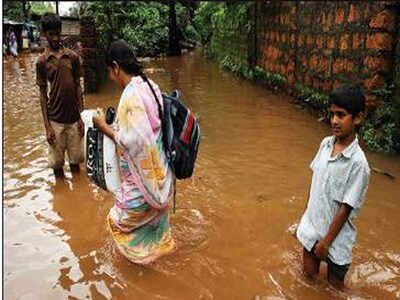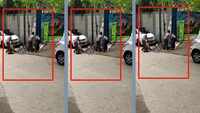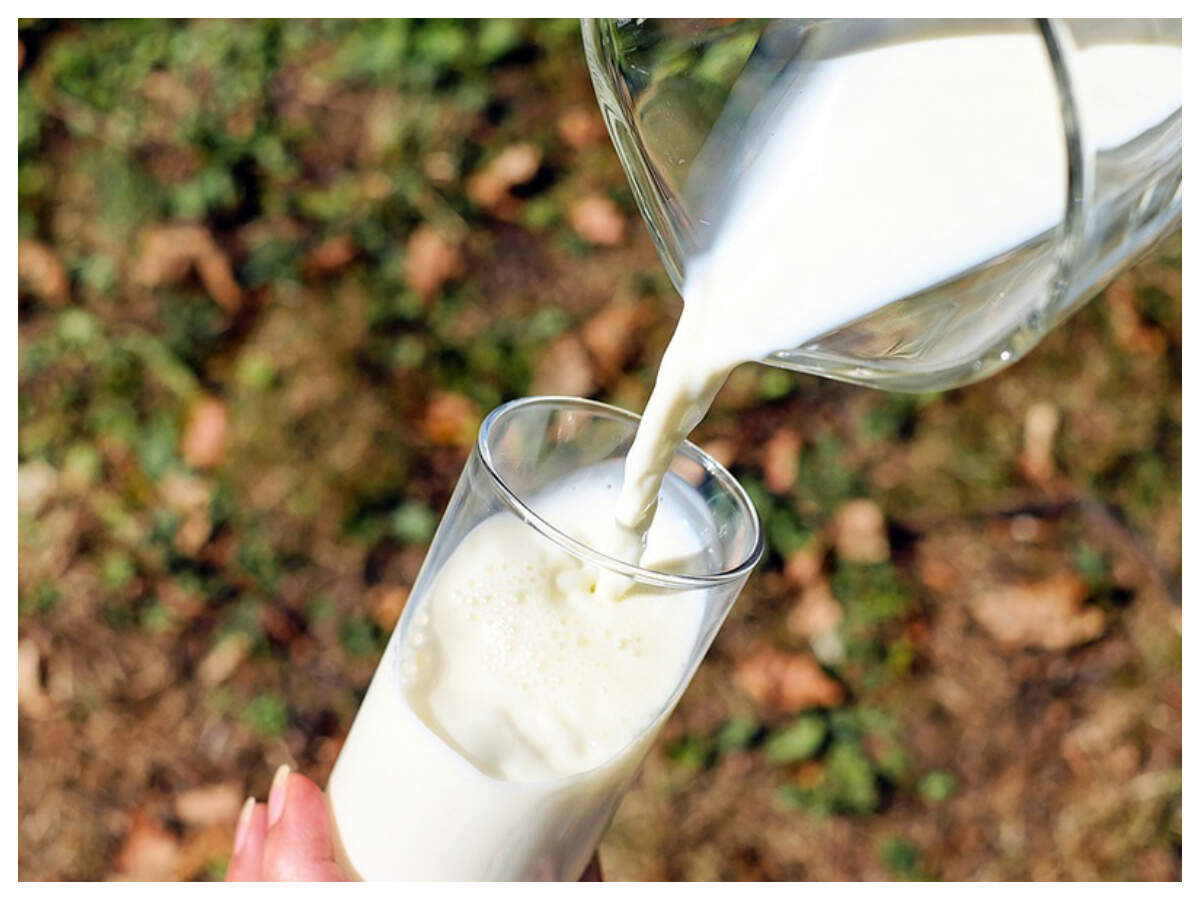
PANAJI: Pandu Lamani, a daily wage labourer has been living in Panaji’s low-lying area, Camra bhat, for nearly 15 years. Each monsoon, whenever there is an instance of incessant rain, he is forced to vacate his tin-roof hut and take refuge in a PWD shed for a day or two. Home inundated and his belongings soaked, Lamani and wife Mangala camp out with just a choolah, some utensils and some food grains.
“Flooding is an annual affair; the water level rises to about one metre in our houses and each time, we have to survive the night in the shed. Our children fall sick. This season, we have yet another two months to endure this,” he said.
Lamani is not the only one affected by the flooding. Residents of Camra bhat have been battling these pitiable conditions for over a decade now. This year, they have already had to leave their homes twice and take refuge in the dehumanizing conditions of the shed.
There are about 30 residents in the shanties at Camra bhat, of which about 10-15 are children.
“When it rains incessantly, the water level in the Camra bhat nullah increases, which in turn floods the road and then encroaches our homes. The flooded roads make it difficult for vehicles to pass through,” said another resident, Babusab Simpigera.
Anushka Mulimanyu, a student at Auxilium High School, said that whenever rain water floods their house, she and her family move into her cousin’s house for the night.
16-year old, Rakesh Talwar, however, isn’t that privileged since his family has no relatives in Goa. “About four inches of water enters our house. Since we sleep on the floor, we are robbed of a decent night’s sleep each time this happens. The situation is worse when we have to go to school the next morning,” he said.
This is a major concern socially, says Manguesh Prabhugaonkar, chairman of the Goa chapter of the Indian Institute of Architects, adding that those affected will feel the impact socially, financially and in terms of compromised health conditions. “These are the city’s urban poor; they don’t have a plan B in terms of disaster management. They go for a few hours to a school or a community building, but have to return to their houses because it’s the only place for them to stay,” Prabhugaonkar said.
Unlike the rest of the city, he said, Camra bhat is located below flood-level, which makes the ward prone to flooding each monsoon. The only other area in Panaji that is below flood-level is Mala.
Suggesting a possible solution, Prabhugaonkar said, “Agencies like the water resources department must step in and monitor issues of mechanised pumping of the water the way it’s done in Sakhali market which gets flooded during the monsoon.”
“Flooding is an annual affair; the water level rises to about one metre in our houses and each time, we have to survive the night in the shed. Our children fall sick. This season, we have yet another two months to endure this,” he said.
Lamani is not the only one affected by the flooding. Residents of Camra bhat have been battling these pitiable conditions for over a decade now. This year, they have already had to leave their homes twice and take refuge in the dehumanizing conditions of the shed.
There are about 30 residents in the shanties at Camra bhat, of which about 10-15 are children.
“When it rains incessantly, the water level in the Camra bhat nullah increases, which in turn floods the road and then encroaches our homes. The flooded roads make it difficult for vehicles to pass through,” said another resident, Babusab Simpigera.
Anushka Mulimanyu, a student at Auxilium High School, said that whenever rain water floods their house, she and her family move into her cousin’s house for the night.
16-year old, Rakesh Talwar, however, isn’t that privileged since his family has no relatives in Goa. “About four inches of water enters our house. Since we sleep on the floor, we are robbed of a decent night’s sleep each time this happens. The situation is worse when we have to go to school the next morning,” he said.
This is a major concern socially, says Manguesh Prabhugaonkar, chairman of the Goa chapter of the Indian Institute of Architects, adding that those affected will feel the impact socially, financially and in terms of compromised health conditions. “These are the city’s urban poor; they don’t have a plan B in terms of disaster management. They go for a few hours to a school or a community building, but have to return to their houses because it’s the only place for them to stay,” Prabhugaonkar said.
Unlike the rest of the city, he said, Camra bhat is located below flood-level, which makes the ward prone to flooding each monsoon. The only other area in Panaji that is below flood-level is Mala.
Suggesting a possible solution, Prabhugaonkar said, “Agencies like the water resources department must step in and monitor issues of mechanised pumping of the water the way it’s done in Sakhali market which gets flooded during the monsoon.”
World Cup 2019
Trending Topics
LATEST VIDEOS
More from TOI
Navbharat Times
Featured Today in Travel
Quick Links
Lok Sabha Election Schedule 2019Lok Sabha Election NewsDelhi Capitals teamMI team 2019Rajasthan Royals 2019RCB team 2019Maharashtra Lok Sabha ConstituenciesBJP Candidate ListBJP List 2019 TamilnaduShiv Sena List 2019AP BJP List 2019Mamata BanerjeeBJP List 2019 MaharashtraPriyanka GandhiBJP List 2019 KarnatakaAMMK Candidate List 2019BJP List 2019 WBLok Sabha Elections in Tamil NaduBSP List 2019 UPNews in TamilLok Sabha Poll 2019Satta Matka 2018PM ModiMahagathbandhanNagpur BJP Candidate ListChandrababu NaiduTamil Nadu ElectionsUrmila MatondkarNews in TeluguMadras High CourtTejashwi YadavArvind KejriwalTejasvi SuryaPawan KalyanArvind KejriwalYogi AdityanathJaya PradaSatta King 2019Srinagar encounter
Get the app







